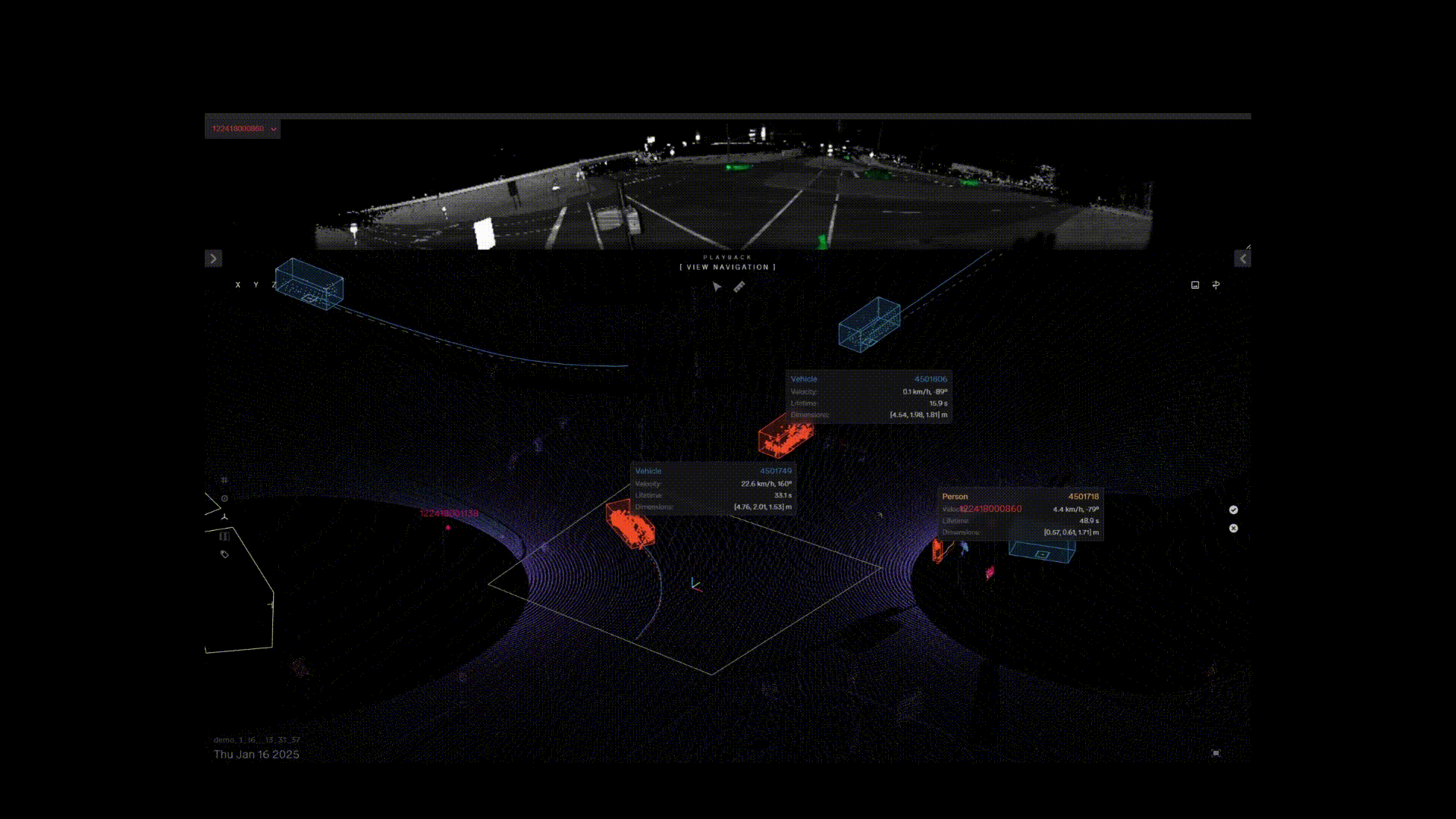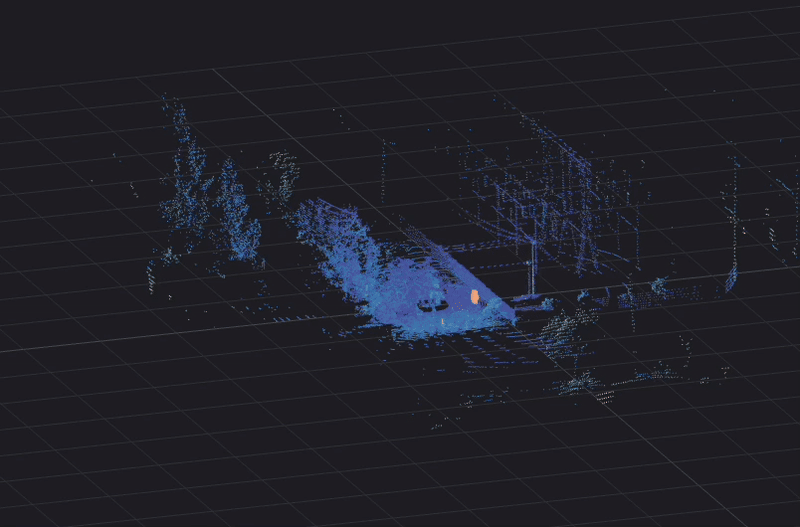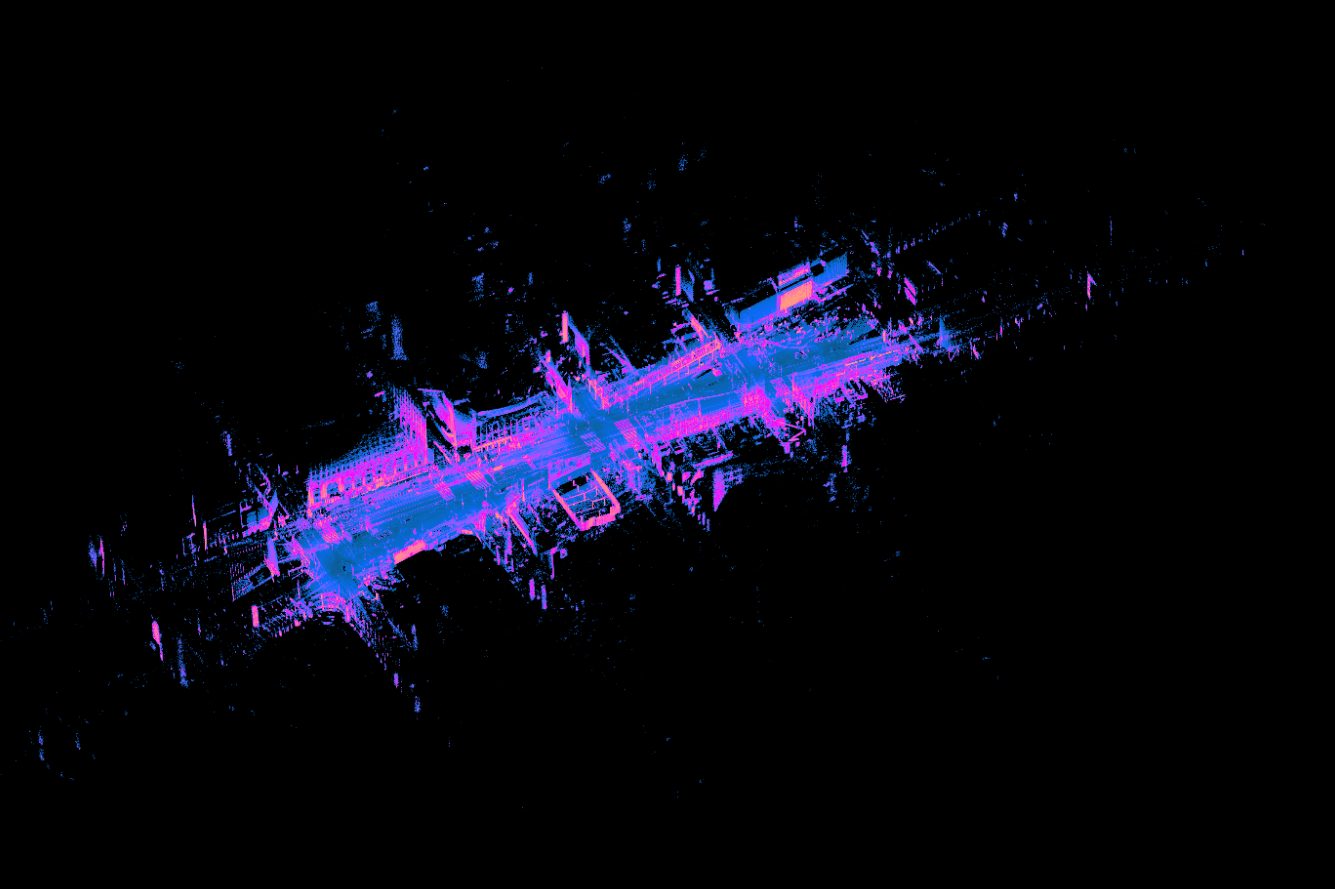The future of smart infrastructure demands more than just collecting data; it requires physical AI - a transformative shift that moves us beyond the limitations of passive sensing to a realm of active perception, where systems understand and react dynamically to the complexities of the physical world. The goal in this shift will be to create safer, more efficient, and insightful environments. The foundation of this intelligence begins with rich spatial awareness and a comprehensive understanding of 3D. Physical AI demands hardware and software that is not only intelligent, but rugged and scalable – qualities that Ouster embeds in every product and solution.
Ouster Gemini’s AI-enabled perception platform is designed to excel in demanding applications and addresses the immediate needs of various smart infrastructure applications, including physical security, transportation, safety, yard and logistics, and crowd analytics.
Ouster Gemini delivers physical AI by enabling intelligent and 3D spatial awareness of environments and the behavior of objects and people within them. Simultaneously, it is paving a clear path towards the large-scale deployment of innovative applications such as cooperative perception (vehicle-to-everything communications or V2X) and advanced automation – all with an unwavering focus on enhancing safety, efficiency, and operational intelligence.
The intelligent core: Ouster's Deep Neural Network for smart infrastructure industries
At the core of Ouster Gemini's AI perception platform lies Ouster’s deep learning perception model, which utilizes a Deep Neural Network (DNN) to accurately detect, classify, and track people and various types of vehicles.
Ouster’s deep learning perception model has been trained on 4 million labeled objects collected from 800 sites, and was engineered to meet the stringent demands of smart infrastructure and related markets. Reliability and high performance are core design principles of the DNN (and Ouster products generally).
The benefits of Ouster Gemini's AI perception model
For Ouster’s software customers across a variety of industries, the DNN offers distinct advantages:
Unconstrained performance: Unlike AI models that struggle outside of ideal conditions, Ouster’s extensive training comprises data sets from millions of labeled objects across diverse settings to ensure high accuracy and reliability in adverse weather, varying light conditions, and complex situations - often involving dense crowds and both stationary and moving objects. This 24/7 performance is paramount for ensuring accurate and continuous monitoring across varying critical use cases.
Purpose-built and extensive datasets: Ouster’s DNN training leveraged extensive datasets from Advanced Driver-Assistance Systems (ADAS) in the automotive industry. This collected mobile and safety-critical data, when combined with data from hundreds of fixed infrastructure deployments, establishes Ouster’s DNN as an industry-leading detection and classification contender in the lidar and smart infrastructure sectors.
Continuous improvement: Ouster is deeply committed to enhancing our technology. The DNN is under constant refinement, leveraging new and diverse datasets.
Performance and low latency: By leveraging NVIDIA’s high-performance accelerated computing technology, Ouster Gemini can provide high-performance, low-latency AI model capabilities that deliver real-time responsiveness and reliability, which are paramount for mission-critical applications across various industries.
With Ouster Gemini, you can move beyond passive sensing to active perception that understands and reacts to the complexities of the physical world - indoors and outdoors. Easily create 3D event zones based on your use case, trigger alerts or actions, and review event recordings.
The NVIDIA advantage: Powering physical AI at the edge
As a part of the NVIDIA Metropolis ecosystem, Ouster’s deep learning perception model has been trained on millions of labeled objects collected using NVIDIA TensorRT and Jetson edge AI platform.
Ouster’s DNN runs on NVIDIA Jetson AGX Orin and NVIDIA Orin NX system-on-modules for real-time inference on the edge. These powerful embedded computing platforms are specifically engineered for the demanding requirements of autonomous machines and intelligent perception systems.
With NVIDIA’s high-performance accelerated computing technology, Ouster Gemini’s edge devices can process vast amounts of 3D lidar data in real-time to deliver low-latency object detection, classification, and tracking. This approach offers significant advantages over traditional heuristic algorithms, including improved generalization, greater scalability, reduced computational resources and real-time processing without the need for calibration.
Ouster’s Deep Neural Network vs. heuristic algorithms
Ouster’s DNN architecture offers significant advantages over AI perception models that rely solely on heuristic algorithms, often based on simple background subtraction methods commonly used by other lidar providers. These advantages include:
Persistent object detection: Unlike many heuristic models, Ouster’s DNN ensures that stationary vehicles and people will not fade into the background over time. This reliable detection is absolutely crucial for the accurate performance of all monitoring use cases, from physical security and road safety to operational analytics.
Robustness to environmental factors: Minor lidar movement caused by wind or vibrations will not generate false positives. This eliminates unreliable detection and prevents nuisance alarms or missed critical events.
Continuous Improvement: As discussed in the section above, Ouster’s DNN is under constant refinement, leveraging new and diverse datasets to facilitate continuous improvement and scaling based on training data.

Ouster’s perception software accurately classifies, detects and tracks vehicles and pedestrians, including stationary vehicles waiting at traffic lights.
Ouster BlueCity: Bringing physical AI to Intelligent Transportation Systems (ITS) for reduced traffic congestion and improved roadway safety
Ouster BlueCity is a prime example of how Ouster is bringing the transformative concept of physical AI to the ITS industry, centered on traffic actuation and road safety management. Ouster is at the forefront of industry-leading innovation to ensure that traffic infrastructure isn't just a passive network of roads and signals, but an actively intelligent ecosystem that perceives and interacts with the vehicles and pedestrians around it in real time.
Ouster BlueCity is a comprehensive, turnkey system that combines Ouster's high-performance 3D digital lidar sensors with Ouster’s AI-perception software and intuitive data analytics, providing a complete, off-the-shelf system. By leveraging the underlying power of the Ouster Gemini AI platform, Ouster BlueCity delivers true physical AI to traffic management and road safety, enabling intelligent perception of roadways and intersections for multimodal road users.
As it relates to ITS, Ouster’s DNN has been trained across hundreds of Ouster BlueCity system deployments encompassing diverse traffic patterns, intersection designs, and environmental conditions. It has also been further validated against manually annotated lidar data for accuracy.
Ouster BlueCity is a prime example of how we are solving important real-world problems with physical AI. Powered by the NVIDIA Jetson Platform, Ouster BlueCity combines digital lidar with real-time perception to improve traffic management and road safety for all road users.

Ouster’s perception software classifies and detects multimodal road users (pedestrians, cyclists and different types of vehicles) at an intersection with the Ouster BlueCity system. The installation is fast and non-intrusive and provides traffic actuation, safety analytics and V2X communication in one complete solution.
Unlock the power of Physical AI with Ouster
Ouster Gemini and Ouster BlueCity are empowering industries to move beyond static sensing to truly intelligent, perceptive systems delivering 3D accuracy for detection, classification, and tracking. Please reach out to Ouster’s team to learn more about AI-powered lidar perception.



